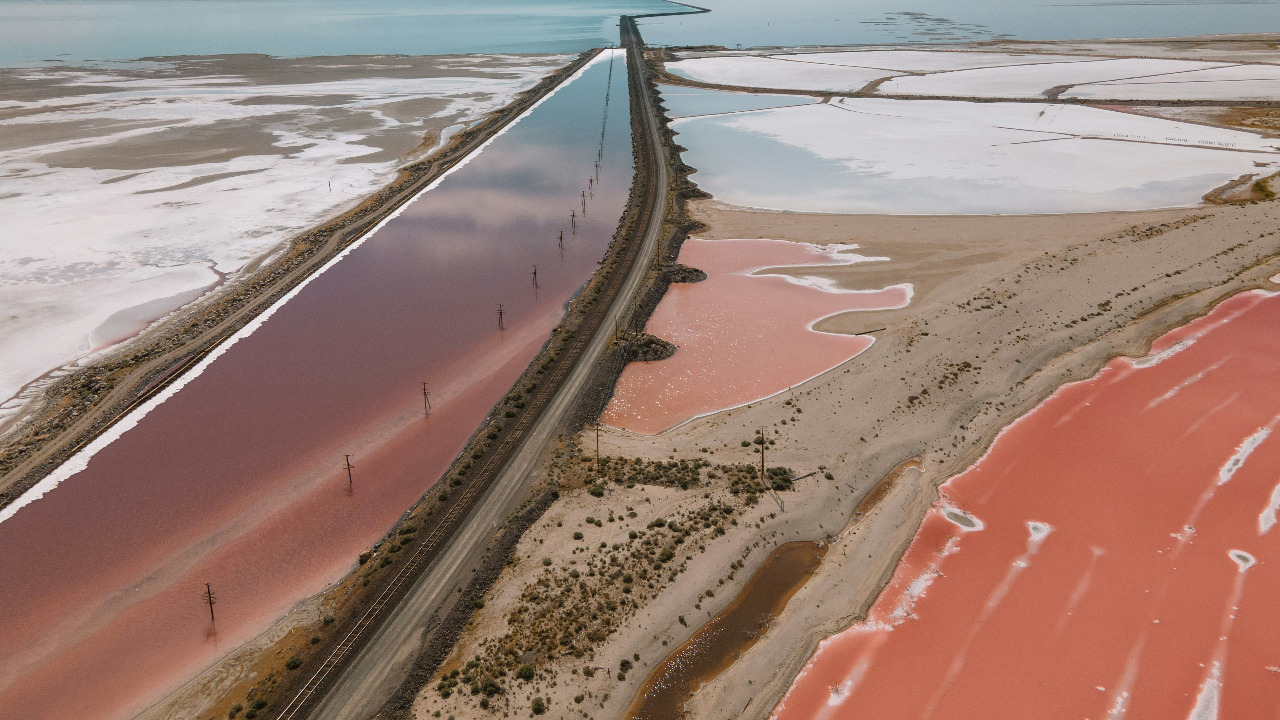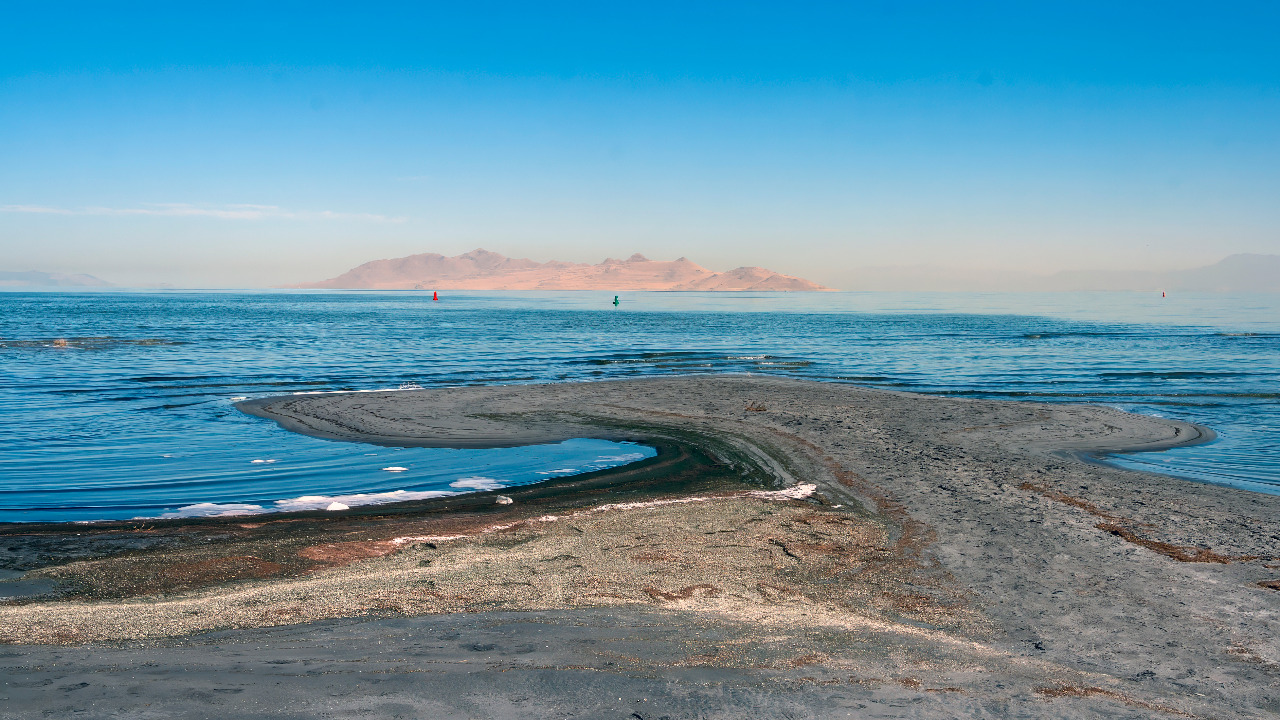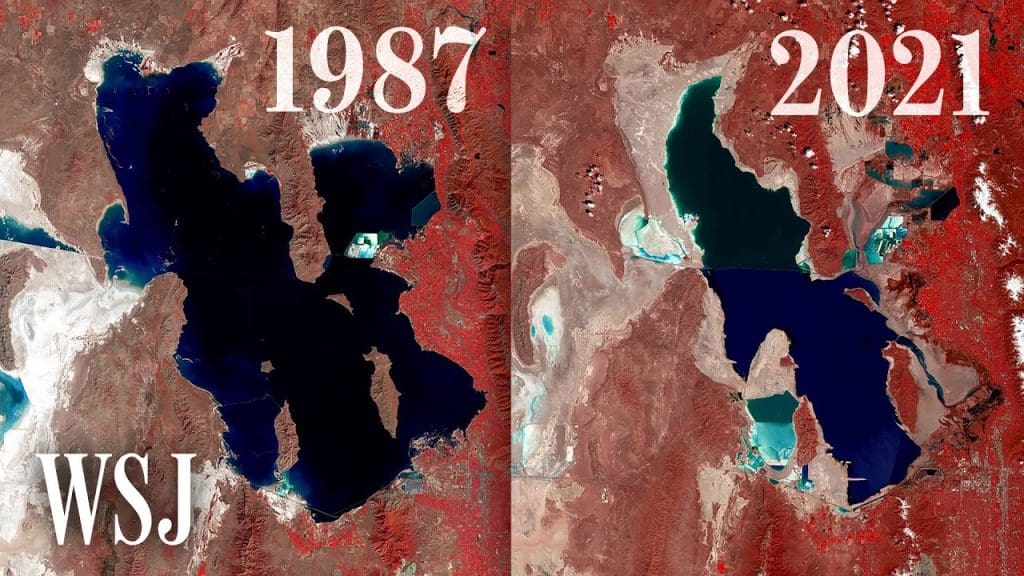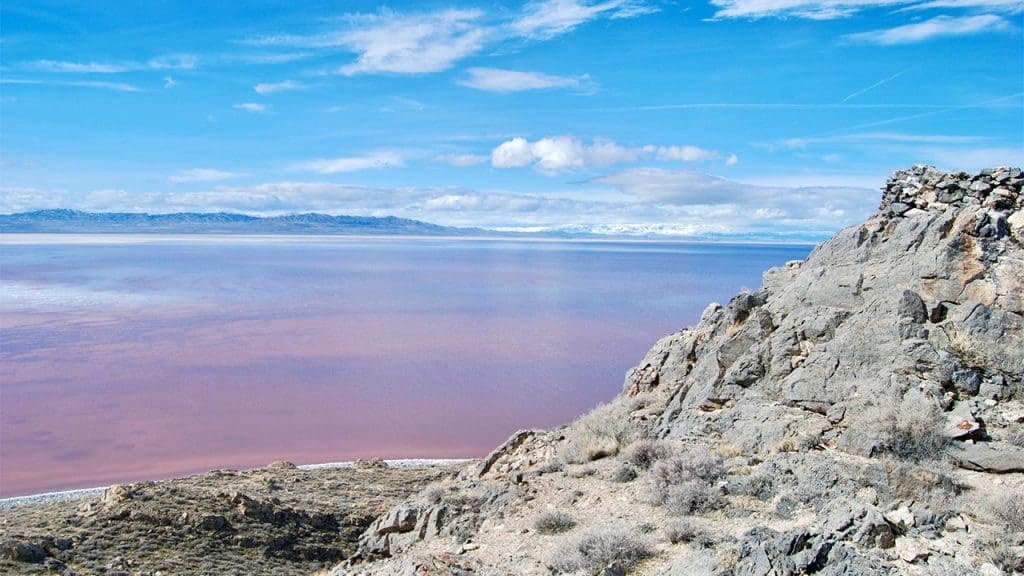
The Great Salt Lake, a unique and vital ecosystem, has been profoundly altered by human actions over the past two centuries. Two significant interventions from the 1800s and 1959 have reshaped its landscape permanently. This transformation has not only affected the lake’s environment but also the communities that rely on it for their livelihoods.
The Early Intervention: The 1800s Dam Construction

In the 1800s, the burgeoning demand for agricultural land and water resources led to the construction of dams around the Great Salt Lake. This era was marked by pioneering settlers seeking to harness natural resources for economic gain. The primary motivation behind these early dams was to support irrigation and provide a reliable water supply for farming. The settlers believed that by controlling the water flow, they could transform the arid landscape into fertile fields.
However, this manipulation of natural watercourses had unforeseen environmental consequences. The dam construction disrupted the natural flow of water feeding into the Great Salt Lake, leading to a significant alteration in its ecosystem. Water levels dropped, increasing salinity and affecting the lake’s biodiversity. Native species found it difficult to survive in the changing conditions, leading to a decline in both plant and animal populations. The ecological balance that had existed for millennia was permanently altered.
The long-term consequences of these early interventions are still evident today. As the lake’s biodiversity dwindled, so too did the local climate’s stability. The reduction in water levels and increased salinity continue to affect weather patterns and the microclimate of the region. This early human intervention set a precedent for future changes, demonstrating the lasting impact of altering natural systems.
The Bridging of 1959: The Railroad Causeway

The construction of the Southern Pacific Railroad causeway in 1959 marked another significant human intervention in the Great Salt Lake’s history. The causeway was built to facilitate transportation and economic growth, creating a direct link across the lake that shortened travel time and boosted trade. This engineering feat, however, came with its own set of ecological challenges.
The causeway effectively divided the lake into distinct sections, disrupting natural water circulation. The northern and southern parts of the lake began to develop differently, with varying salinity levels and ecological characteristics. This division led to the creation of two separate ecological zones, each with its unique challenges. The northern section, receiving less freshwater, became significantly saltier, while the southern section maintained a relatively lower salinity.
The dual impact on wildlife habitats and local industries was profound. The altered water conditions affected brine shrimp populations, a crucial food source for migratory birds. Industries such as salt extraction and tourism, which relied on the lake’s unique properties, also faced challenges. The interconnectedness of human actions and natural systems became increasingly evident, as the causeway’s construction continued to impact the lake’s ecology and local economy.
Current Challenges and the Need for Action

Today, the Great Salt Lake faces new challenges, with water levels dwindling at an alarming rate. Climate change, combined with increased water diversion for agriculture and urban use, has exacerbated the problem. As the lake shrinks, its ecological and economic importance becomes more precarious. The ongoing decline threatens not only the lake’s biodiversity but also the communities that rely on it.
In response to these challenges, various legislative and conservation efforts have been proposed. Emergency measures and conservation initiatives aim to mitigate the lake’s decline, with scientists and environmentalists advocating for sustainable water management practices. These strategies include reducing water consumption, enhancing water efficiency, and restoring natural water flows to support the lake’s recovery.
The broader impact on the communities surrounding the Great Salt Lake cannot be ignored. Economic, environmental, and health-related challenges have arisen as the lake’s health deteriorates. Industries reliant on the lake, such as tourism and salt extraction, face economic uncertainty. Additionally, the lake’s decline poses environmental health risks, including increased dust storms and air quality issues, impacting the well-being of local residents.
Lessons Learned and the Path Forward

The history of human intervention in the Great Salt Lake serves as a poignant reminder of the unintended consequences of altering natural ecosystems. Reflecting on these past actions, it becomes clear that sustainable water management practices are essential to preserving vital ecosystems. The lessons learned underscore the importance of considering long-term ecological impacts when planning development projects.
Looking forward, potential solutions and innovations offer hope for restoring and preserving the Great Salt Lake. Water-saving technologies, ecosystem rehabilitation projects, and collaborative efforts between government agencies, scientists, and local communities could help reverse the lake’s decline. These initiatives aim to balance human needs with environmental preservation, ensuring the lake’s health for future generations.
The story of the Great Salt Lake holds global significance as a cautionary tale for other bodies of water worldwide facing similar challenges due to human actions. The interconnectedness of human and natural systems is evident, highlighting the need for responsible and sustainable resource management. As we move forward, the lessons from the Great Salt Lake can guide global efforts to protect and preserve our planet’s precious water resources.